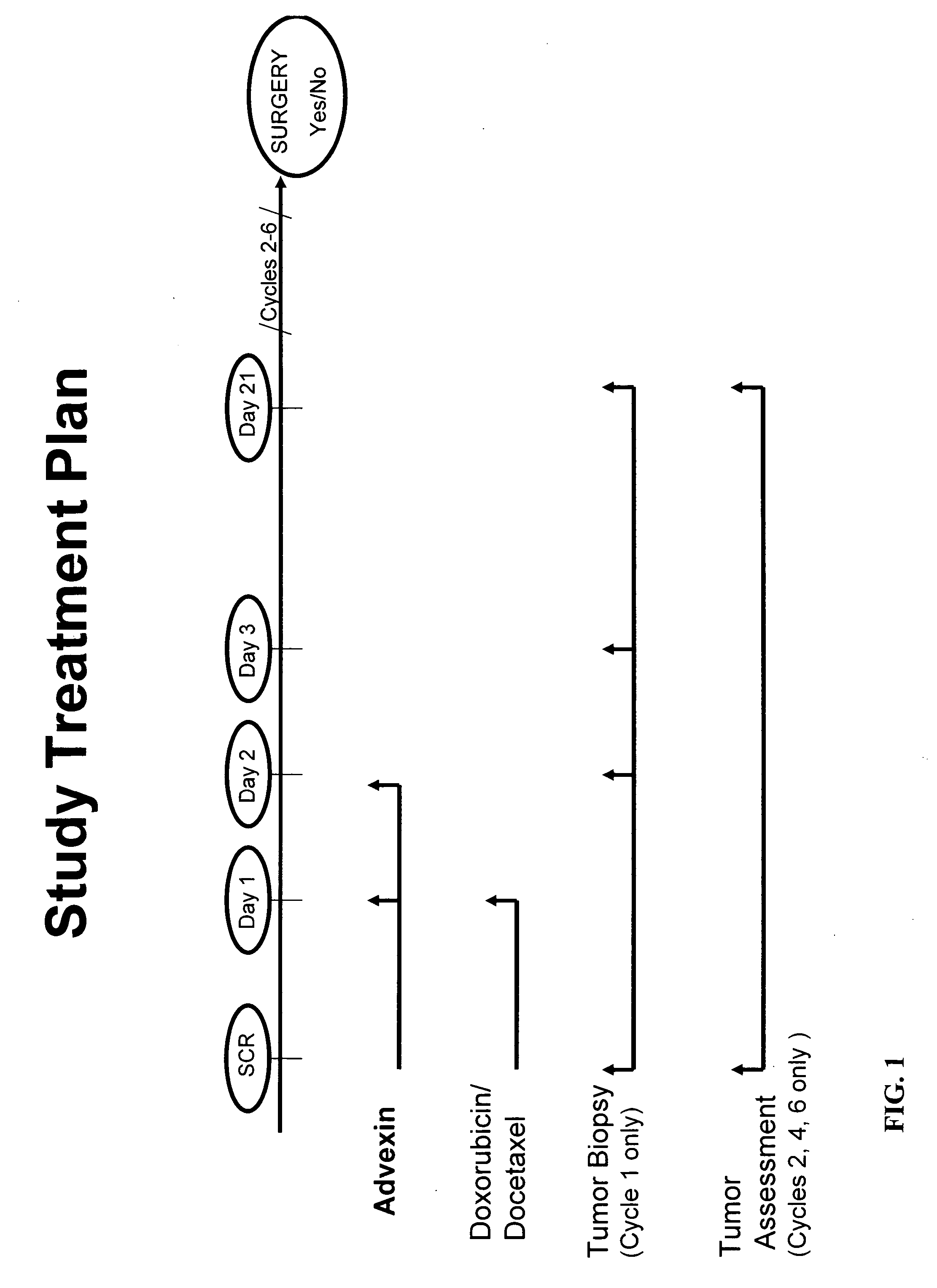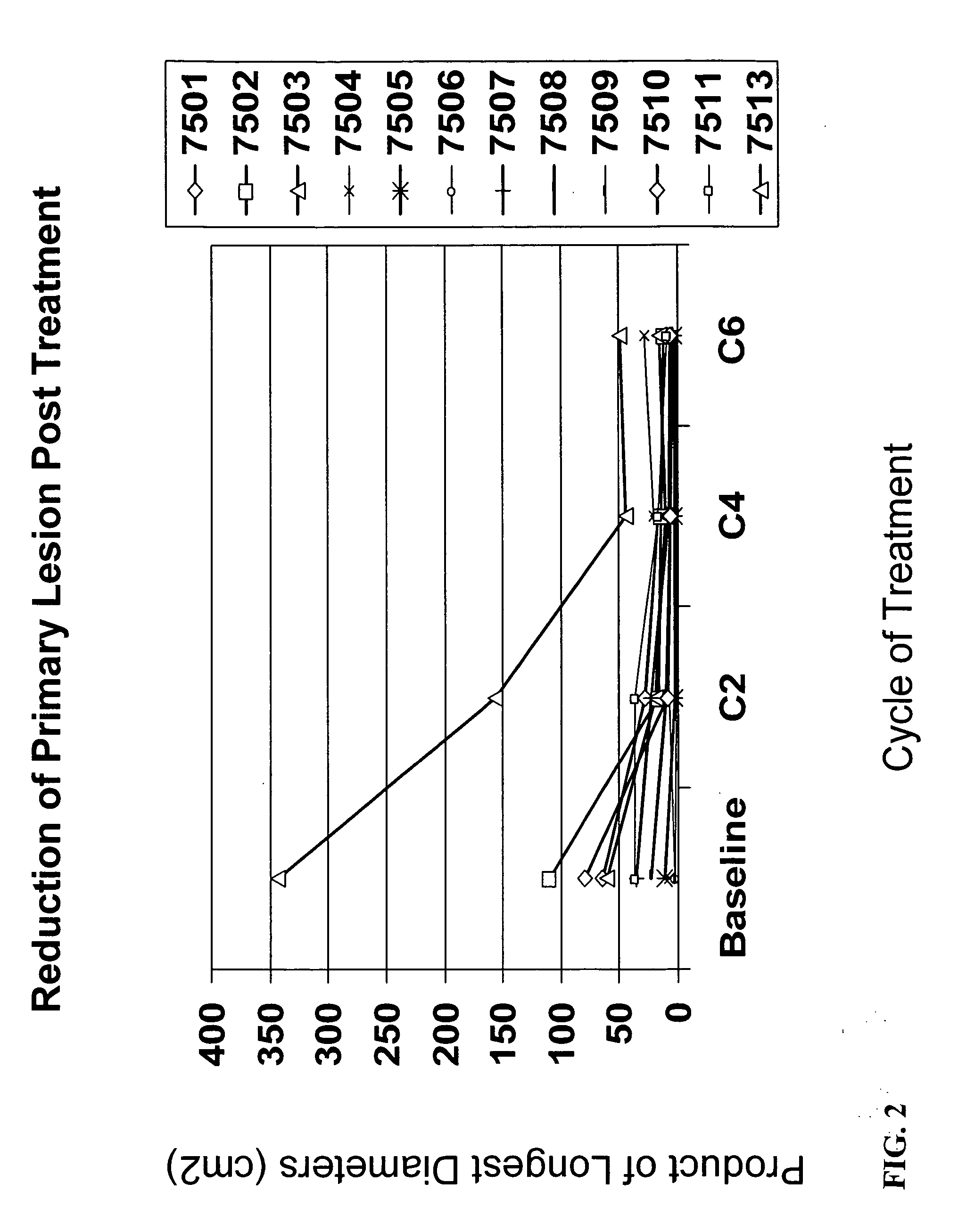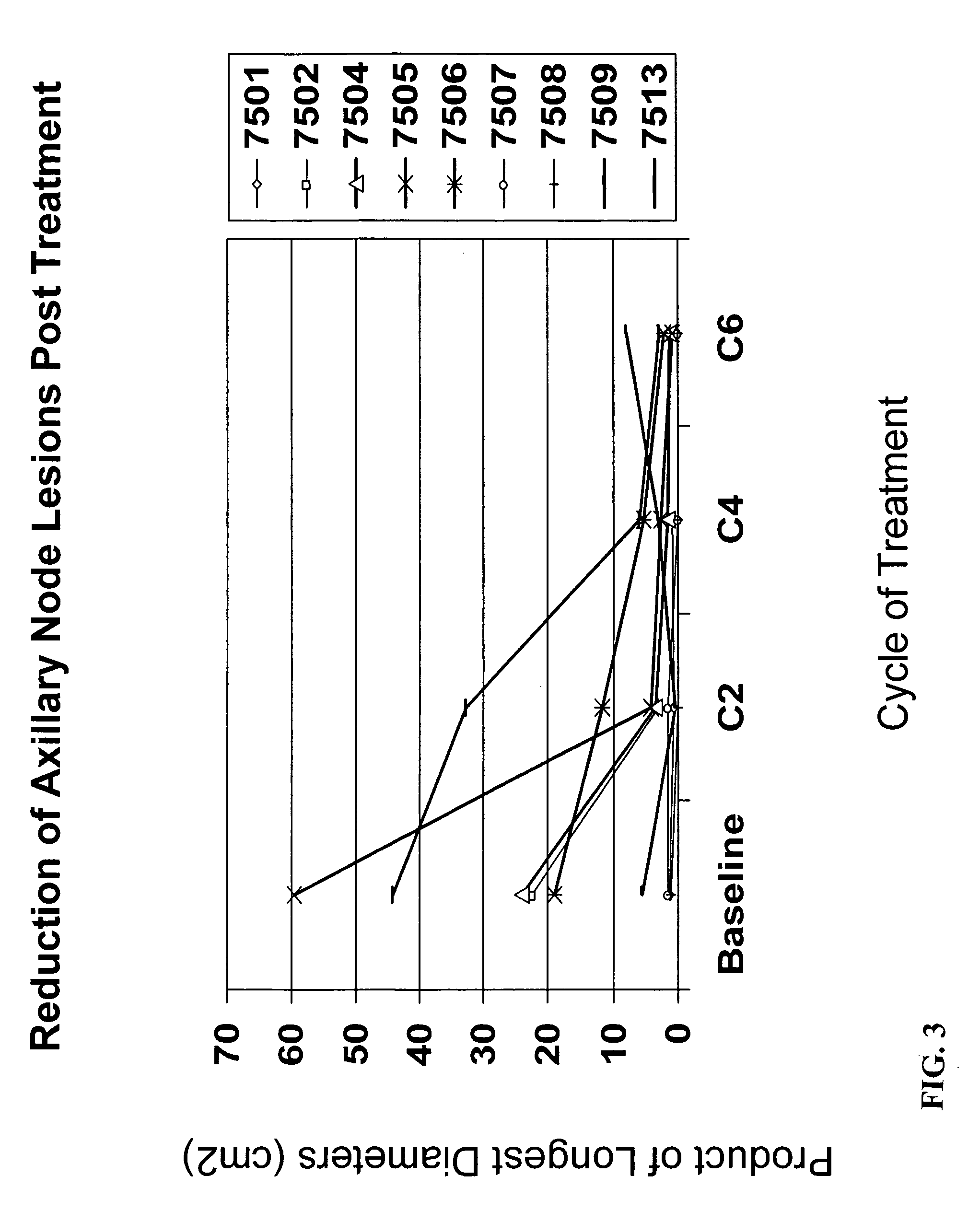Cancer immunotherapy incorporating p53
a technology of immunotherapy and cancer, applied in the field of cancer immunotherapy incorporating p53, can solve the problems of limited treatment options of many common cancer types, limitations of each of these modalities, and the recurrence of cancer in local regions remains a significant problem
- Summary
- Abstract
- Description
- Claims
- Application Information
AI Technical Summary
Benefits of technology
Problems solved by technology
Method used
Image
Examples
example 1
Materials and Methods
[0211] Locally advanced breast cancer (LABC) is treated with induction chemotherapy (IC), surgery, radiotherapy + / − adjuvant hormonal therapy. Alterations in the p53 gene have been documented with higher frequency in LABC (50%-55%) compared gene with early breast cancer (25%-30%), and p53 mutations correlate with poor response to chemotherapy, more aggressive disease, early metastasis, and decreased survival rates. Although primary chemotherapy has been demonstrated to be effective in the management of LABC, other approaches are needed to improve response and survival in these patients.
[0212] A study was conducted to examine the therapeutic efficacy and safety of a treatment regimen employing a recombinant adenovirus (Advexin®) expressing p53 under the control of a CMV promoter, and two chemotherapeutic agents, docetaxel and doxorubicin. The study was conducted as an open label, non-randomized Phase II study in patients with LABC. The criteria for patient sele...
example 2
Results
[0216] Thirteen patients have been enrolled. The median age was 56 years (range 39-71). The clinical stage was determined to be: median tumor size 8.00 cm (range 5.00-11.00); IIIB-c / IIIA, 8 (75%) / 4 (25%); T4 / T3 / T2, 7(58%) / 4(33%) / 1(8%). Patients received up to 6 cycles of Advexin® / docetaxel / doxorubicin treatment. All patients (100%) had surgery.
[0217] Correlative studies on eleven patients were undertaken as follows: [0218] a) p53 status: eight patients (73%) had p53 mutations; [0219] b) presence of anti-p53 antibodies: four patients (37%) were positive at baseline for Anti p53 Abs (no change with treatment); [0220] c) presence of anti-Ad5 antibodies: ten pts (90%) were positive for Ad5-Abs at baseline.
[0221] Safety analysis indicated that there were no Grade 3 side effects considered related to Advexin®. Eight patients (67%) had residual pathologic foci of disease in the breast of ≦10 mm. The mean size of the residual tumor in the breast was 1.78 cm. All specimens showed e...
example 3
[0229] Table 2 provides the baseline characteristics of the patients.
TABLE 2N13Median Age (range)56 yr (39-71)Median Tumor Size8 cm (5-11)N0 / N1 / N2 / N31 / 3 / 4 / 4STAGE IIIA / IIIB / IIIC4 / 6 / 2p53 MUTATION8 pos / 3 neg
PUM
| Property | Measurement | Unit |
|---|---|---|
| Time | aaaaa | aaaaa |
| Fraction | aaaaa | aaaaa |
| Fraction | aaaaa | aaaaa |
Abstract
Description
Claims
Application Information
 Login to View More
Login to View More - R&D
- Intellectual Property
- Life Sciences
- Materials
- Tech Scout
- Unparalleled Data Quality
- Higher Quality Content
- 60% Fewer Hallucinations
Browse by: Latest US Patents, China's latest patents, Technical Efficacy Thesaurus, Application Domain, Technology Topic, Popular Technical Reports.
© 2025 PatSnap. All rights reserved.Legal|Privacy policy|Modern Slavery Act Transparency Statement|Sitemap|About US| Contact US: help@patsnap.com



